How to play the ‘Which One is Heavier?’ game! Easy DIY balance scales for toddlers and preschoolers to explore weight and gravity concepts through play.
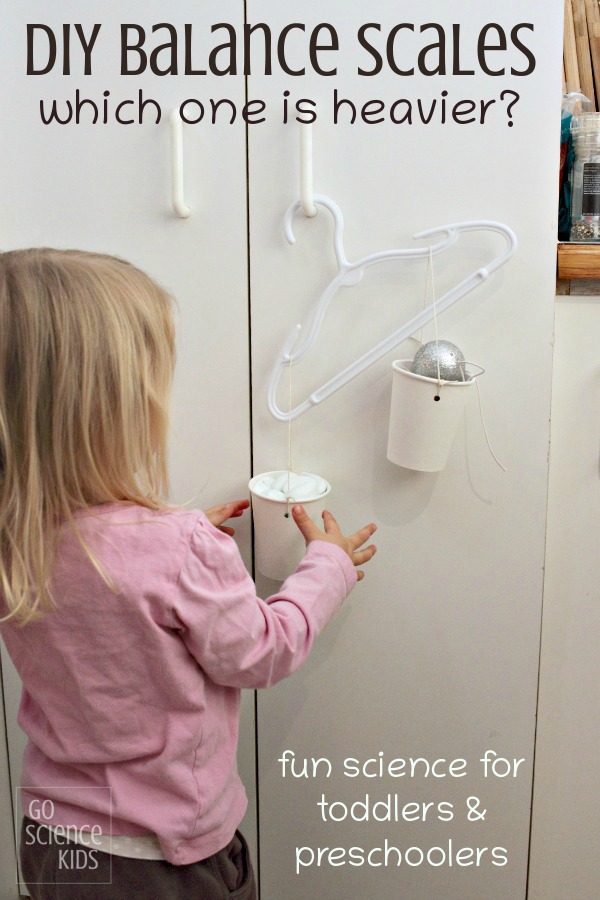
This is an easy idea that took only a few minutes to make, and helped keep my 2 year, 11 month old daughter Bumble’s mind and body active (and out of mischief) at the end of a crazy day. Bumble had lots of fun running around the house searching for things to different things to weigh and compare.
We compared the weights of:
- mandarins
- a tangerine
- costume jewellery
- Lego Duplo animals
- white decorative pebbles
- Christmas baubles (which I’d *found* when I swept under the television unit earlier that day. Yes, in August. Guess that’s a job that I don’t do very often!)
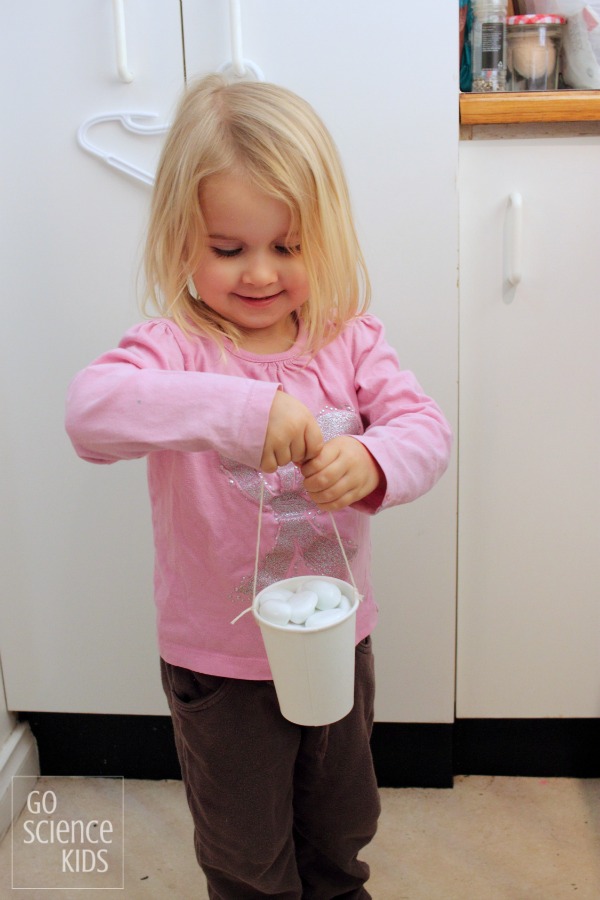
Every time she brought back a new bucket of goodies, she’d add it to the balance scale, and we’d call out in a sing-song voice “Which one is heavier?” and she’d point to the heavier bucket. “How can you tell? How do you know which one is heavier?” She explained that the heavier one was lower.
Which, I guess, is a toddler sized introduction to the laws of gravity and physics. 🙂
To make a set of DIY balance scales, all you need is:
I’ve included a few affiliate links above for your convenience, but this is one of those activities where you can probably just use what you already have at home.
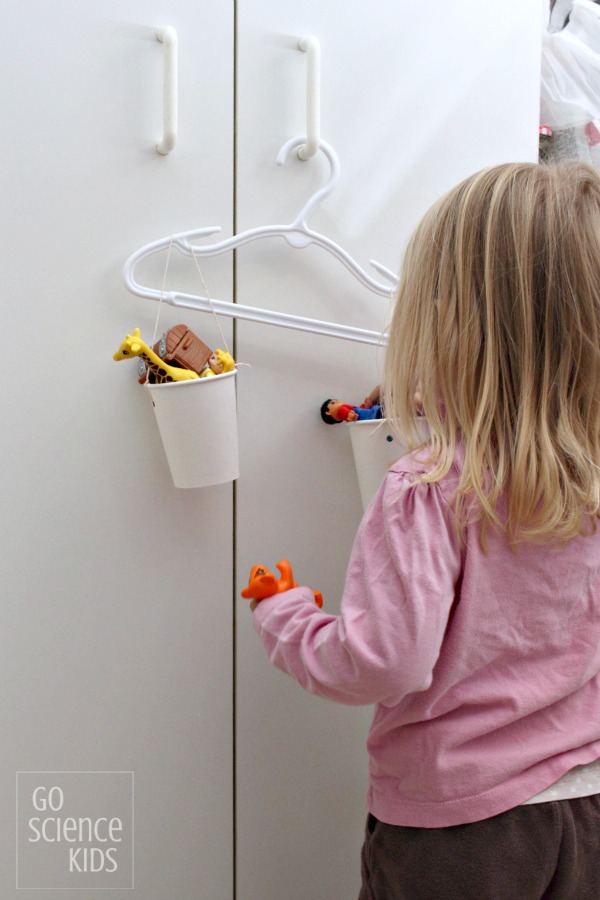
What to do
1. Hang your coat hanger somewhere where it can swing easily, and is low enough for kids to reach.
We hung ours off our pantry cupboard door.
2. Use the hole punch to create holes on either side of the paper cups. Cut two equal lengths of twine, and tie onto the paper cup to turn them into two little buckets.
Allow enough twine for a decent bucket ‘handle’, as it makes it easier for kids to fill the buckets, and it’s also easier for them to put the buckets on and off the hanger afterwards all by themselves.

3. Ask your child to find different things to fill each bucket.
It doesn’t exactly matter what, the more random the better. Ask your child which bucket they think is heavier?
4. Add your buckets to the hanger, and see which one is the heaviest and therefore hangs lowest.
Did they guess correctly? Now ask them to find some more things to test! Can they adjust the contents to balance the scales?
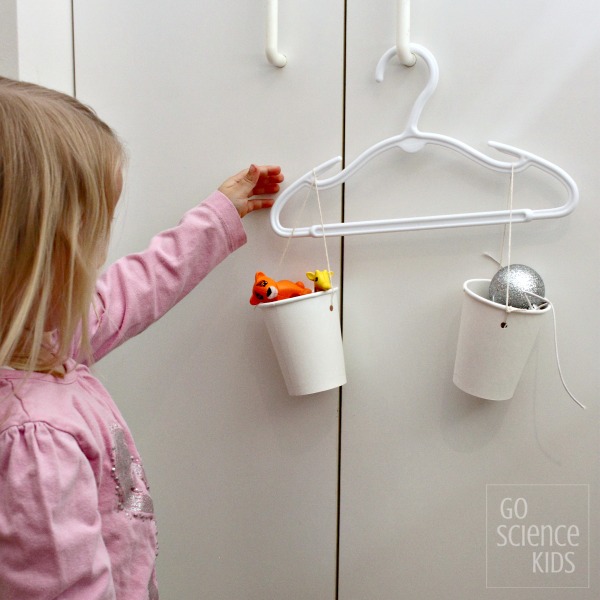
With a bit of trial and error, Bumble worked out how to balance the scales using Lego Duplo animals and Christmas baubles.
I resisted the urge to intervene further and instead let Bumble have fun with this activity in her own way. She went back and forth, testing this and that. Maybe another day we might devise weight units or formally hypothesize and record our findings, but for now, just simple questions and open ended exploration of a new toy is enough.
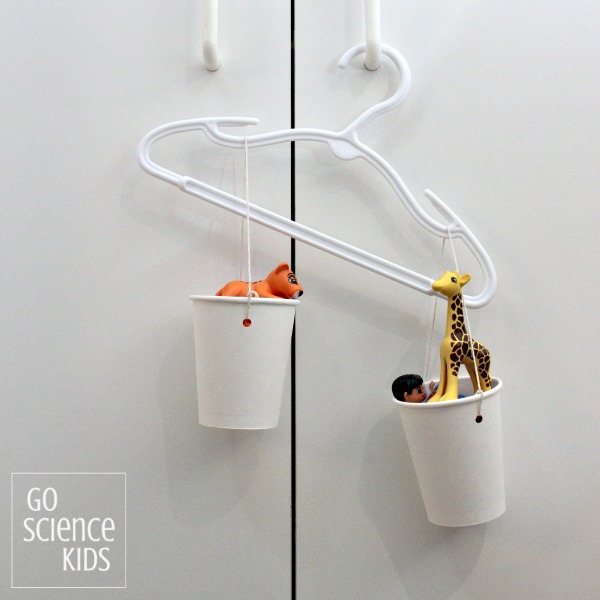
When Daddy came downstairs a little later on, Bumble was so delighted to tell him all about how we’d been playing the “Which One Is Heavier?” game, and explained how the balance scale works. “And then the heavier one goes lower!”

Fun Science Fact
Because the Earth is so very big, we can feel it’s gravity. Gravity is the force that makes everything pull towards the middle of big things, which is in this case, the ground (or towards the earth’s core.) When something feels heavy, what we are actually feeling is the result of gravity pulling on that object.
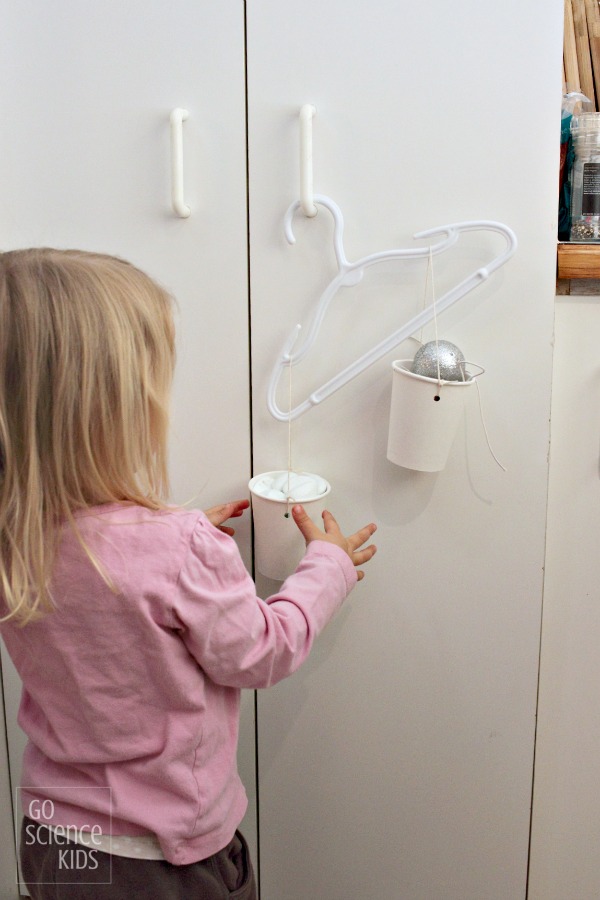
Suitable for
I’d recommend this activity for toddlers and preschoolers. My 2 year, 11 months old daughter Bumble really enjoyed this game!
* This post contains affiliate link(s). An affiliate link means I may earn advertising fees if you make a purchase through my link, without any extra cost to you. It helps to keep this little project afloat. Thank you for your support.

#
What a fab and easy project for kids to learn with – love it and pinning 🙂
#
Thank you!
#
This is a great idea to help children start to develop their scientific curiosity. I remember my parents introducing me to similar scientific experiments when I was young. They encouraged me to learn how to use scales, measuring cups, and observe changes. I’ll have to remember this simple balance activity when I have kids. That way they will be better prepared for using balances in chemistry class.
#
Thanks Alex! I really believe so much learning can happen in these preschool years through open-ended experimenting and play. 🙂
#
#
#